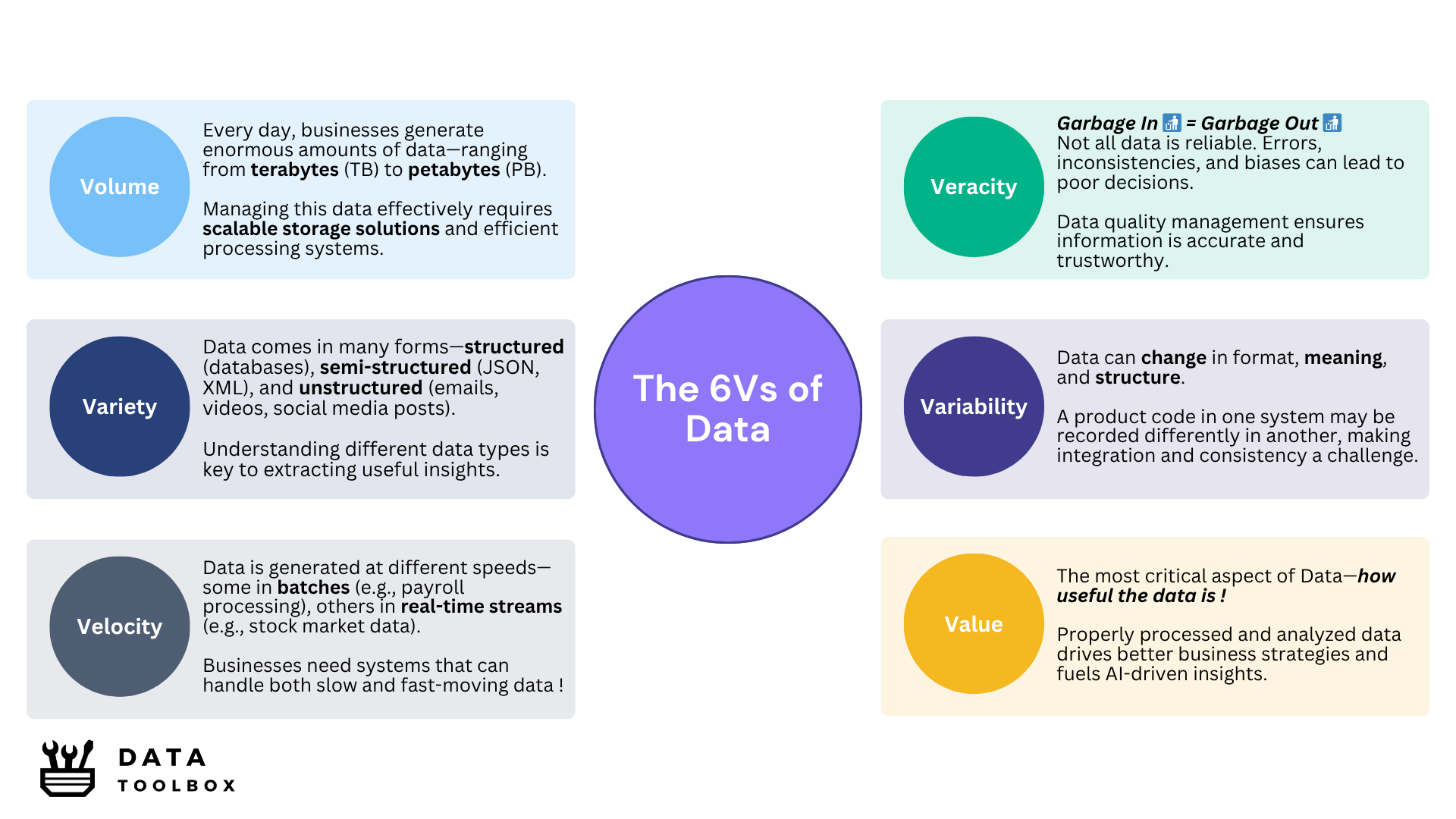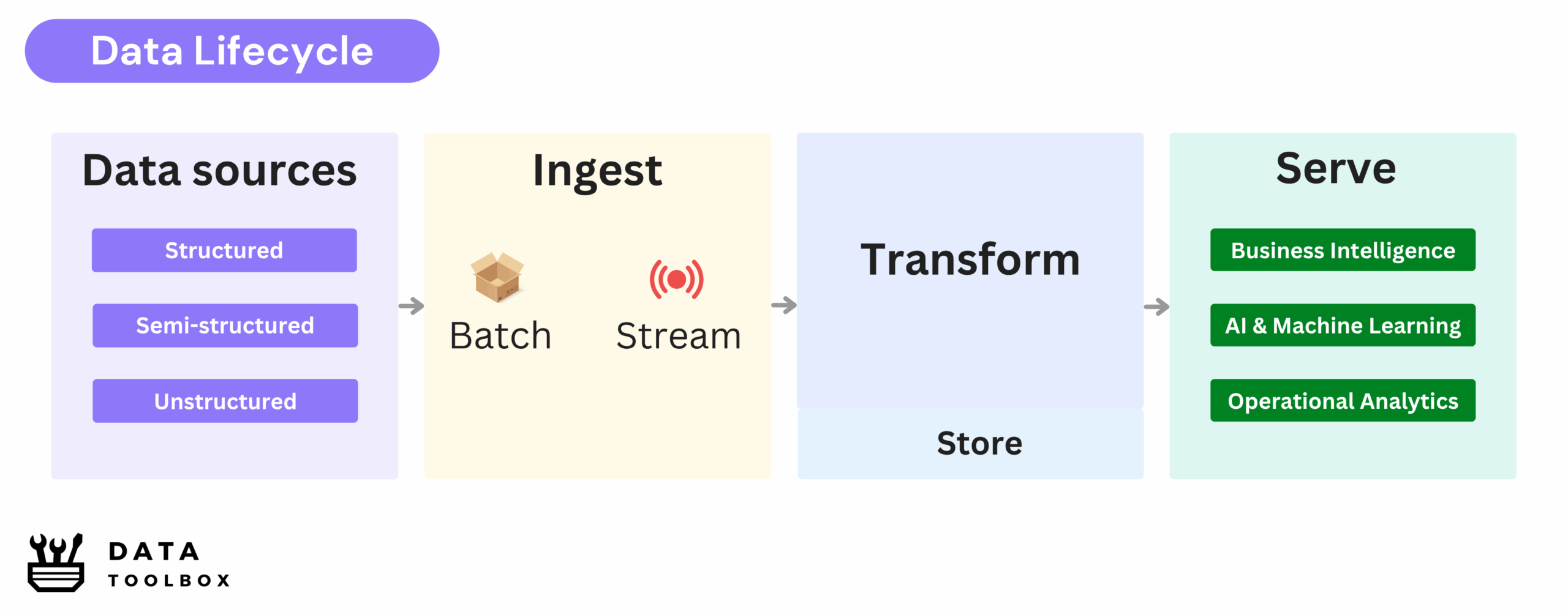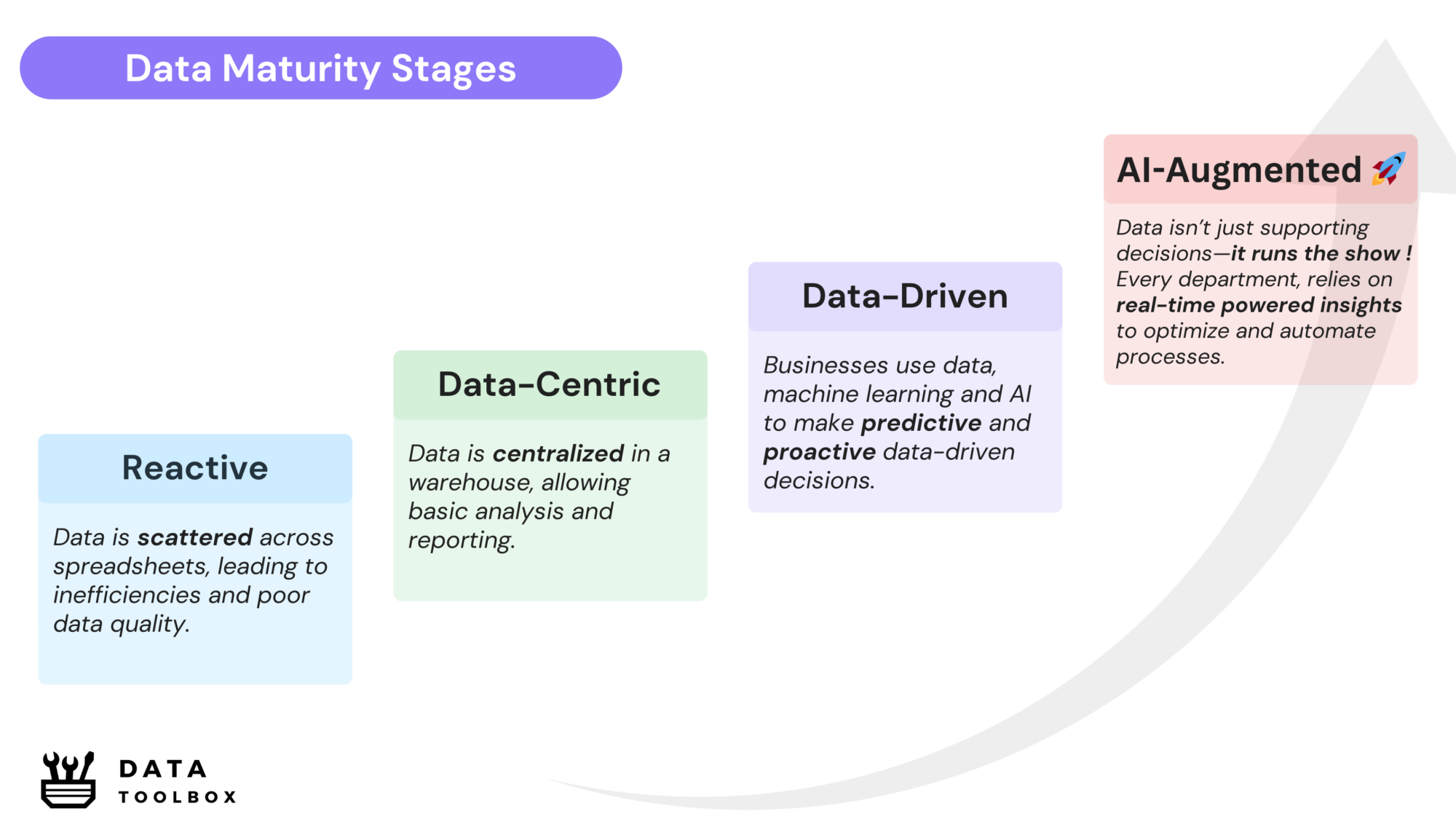Imagine this
The massive amount of data a company generates daily. Every time you buy something online, swipe your credit card, or even just browse a website, you’re generating data. Companies collect it, store it, and (hopefully) use it to make better decisions. The challenge? Raw data is like crude oil 🛢️, important but useless until refined. Many businesses collect massive amounts of information but struggle to clean, structure, and extract value from it, leaving data siloed, messy, and underutilized.
A well-structured approach to data can be a game changer. Imagine a retailer knowing exactly what products will sell before they even hit the shelves or a healthcare company predicting disease outbreaks based on patient data. When managed properly, data helps businesses track performance, spot trends, and make better decisions. And AI? Well, it’s just the icing on the cake (la cerise 🍒 sur le gâteau 🍰, for the french)—powered entirely by clean, well-organized data.
AI, at its core, is powered by data. The better the data, the smarter the AI. But before companies can take advantage of AI-driven insights, they must first master the fundamentals of the data lifecycle.
How It Works: The 6 Vs
Data isn’t just about size—it’s about how data is collected, processed, and used. It is defined by six key characteristics:

Making Data Work: The Data Lifecycle
To transform raw data into valuable insights, businesses follow a structured Data Lifecycle:

- Data sources: Data originates from various sources—customer interactions, transactions, IoT sensors, and digital platforms. The first step is identifying what data matters most to business objectives.
- Ingestion: Moving data from its source to storage happens in two ways:
- Batch Processing: Data is collected over time and processed periodically.
- Streaming: Data is processed in real-time, allowing businesses to react instantly to events.
- Transformation: Raw data is rarely ready for analysis. It must be cleaned, structured, and enriched while removing errors, organizing fields, and ensuring consistency.
- Storage: Data needs a place to be stored securely and efficiently. This can be typically in data warehouses or lakes, depending on business needs and scalability.
- Serving: Processed data is made available for decision-making, AI models, and business intelligence tools. This includes:
- Business Intelligence: Dashboards and reports for tracking historical and real-time performance.
- Machine Learning & AI: Algorithms analyze trends and patterns to make predictions and automate processes.
- Operational Analytics: Embedding analytical insights into business systems (via APIs, GraphQL, etc.) to enable real-time, data-informed decisions within day-to-day operations.
And in Reality? The Data Maturity Stages
Businesses don’t go from “data mess” to “AI genius” overnight. Most of them evolve through different stages of data maturity, progressing step by step as their data capabilities improve. This journey typically follows these stages:

Understanding Data: The 5 Types of Analysis
Once your data is clean, structured, and ready to go, the real magic begins—analysis! There are five main types that help turn data into decisions:
- 1️⃣ Descriptive – What happened? Think dashboards summarizing past performance.
- 2️⃣ Diagnostic – Why did it happen? Digging into the causes, like a data detective.
- 3️⃣ Predictive – What will happen? ML models step in to forecast the future.
- 4️⃣ Prescriptive – What should we do? Algorithms suggest actions based on potential outcomes.
- 5️⃣ Cognitive – What would a human do? AI mimics human reasoning using techniques like natural language processing (NLP), optical character recognition (OCR), and Gen AI.
Each level builds on the last, helping businesses move from observation to action, and ultimately to automation. Without this layer, data is just numbers, with it, data becomes power ⚡.
The Wrong Way to Do It
To take full advantage of both Data and AI, organizations need a strong data foundation in place. Without proper data management, business dashboards will produce misleading figures, AI models will hallucinate inaccurate results, and the total ROI will turn negative 📉.
Common pitfalls include:
- Siloed Data: Different teams manage separate datasets, making integration difficult.
- Poor Data Quality: As we like to say in IT: Garbage In 🚮 = Garbage Out 🚮. Dashboards give wrong numbers, AI models “hallucinate,” and bad insights cost money.
- Misalignment with Business Goals: Collecting and storing massive amounts of data without a clear strategy leads to wasted investments. Data should always serve a purpose aligned with business objectives. Align or you will find yourself cleaning a messy data swamp 🐸 !
- Lack of Data Governance: Without proper policies on data access, security, and compliance, your business can risk breaches, regulatory fines, and misuse of sensitive information.
Key Takeaways

Yes, we truly love Data & AI 💘 ! It’s undoubtedly one of the hottest fields to work in today, but let’s not forget the fundamentals.
- Data is a business asset: Well-managed data leads to better decisions and competitive advantage.
- Data is more than size: Understanding the 6 Vs helps businesses extract real value.
- Skipping foundational data steps leads to failure: Businesses must establish strong data practices before diving into AI !
- A structured approach ensures long-term success: Companies that invest in well-managed data gain a significant competitive edge.
If you’re looking to delve deeper into the world of analytics, you can read : Analytical vs Transactional: Why You Can’t Mix Oil and Water.


